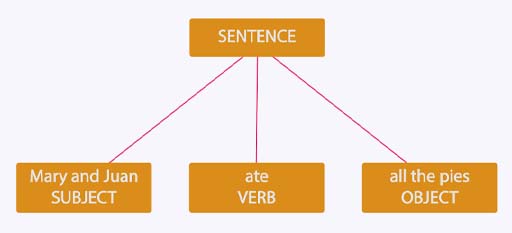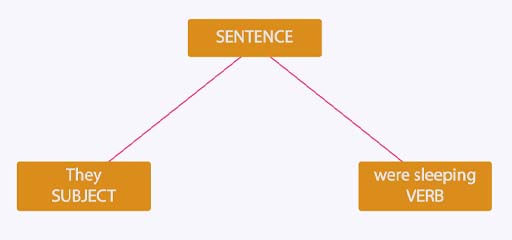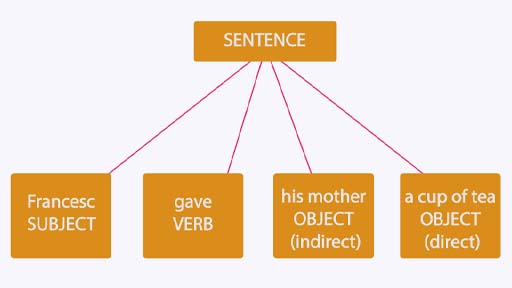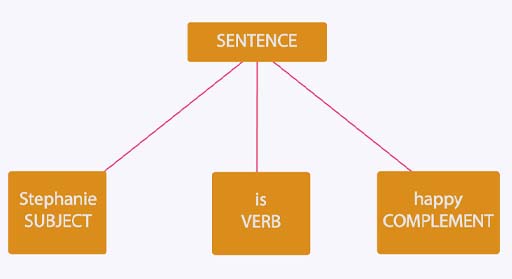3 How sentences are built
Most of the sentences you’ve seen so far have been quite simple. But now you know the basics about how subject, verbs and objects fit together, you can start to take a look at some of the different ways in which we can arrange phrases to make meaning in English. The easiest way to do this is by using diagrams.
In this first diagram you can see the subject + verb + object structure that you’ve been looking at. This structure is the basic structure of English sentences and is known as SVO (subject, verb, object). We can use a similar structure to draw a sentence without an object. This structure is known as SV (subject, verb).
There are also some sentences that can have more than one object, such as
Francesc gave his mother a cup of tea
I bought Gloria a vintage clock
Grandma told the children a bedtime story
The subjects are simple enough (Francesc, I and Grandma), but there are two objects in each example, which we would draw like this:
Many sentences that have two objects involve some form of giving and receiving. The subject (Francesc) gives the direct object (that which is directly acted upon, a cup of tea) to a recipient, known as the indirect object (his mother).
Finally, there are also sentences that tell us something about the subject although no action or process is taking place.
Stephanie is happy
I am hungry
The chinchilla is very fluffy
In these examples, we can’t classify happy, hungry and very fluffy as objects because they aren’t tangible things that the subject is acting upon. Rather, they simply give us more information about the subject and their experiences. These characteristics can be physical (very fluffy) or existential (happiness) and they can be permanent or fleeting. We call this component of the sentence a complement and you’ll often find them used with a form of the auxiliary verb BE.
There are, of course, other grammatical structures used in English. We can add additional information to this basic structure about how, when, and where something happened. Now you’ve mastered the basics, you can take a closer look at how we can add more information to SVO.




